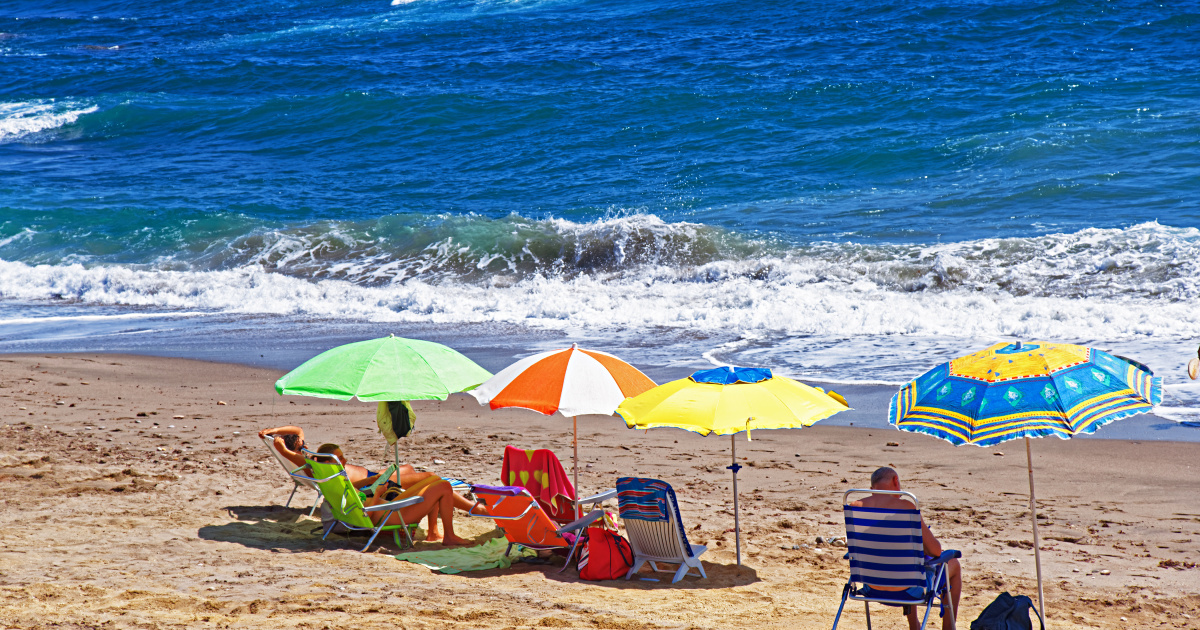The Most Effective Ways To Avoid Getting Skin Cancer
Summer is right around the corner; with it comes light, heat, an uplift in spirit and the looming threat of the sun’s harsh rays. Not only does too much sun cause physical damage (such as wrinkles, leathering, and sunspots), it also significantly increases the chances of developing skin cancer. As skin cancer has been increasingly on the rise in the past several years, prevention and protection are easily the best precautionary measures to take.
Seek Shade

While basking in the sun may feel incredible, taking in too much of it is incredibly damaging to the skin. During the hours of 10 am and 4 pm the sun’s ultraviolet rays (UVR) reach their peak strength, this is the time when it is most critical to seek shade as much as possible. If outside, trees or an outdoor tent, pavilion or gazebo are all great options to find shelter. Carrying an umbrella is also an excellent option.
Prevent Sunburns

There is a common misconception that once a sunburn occurs, sun tanning is much easier to accomplish throughout the summer season. Not only is this a misconceived notion, it is also incredibly dangerous. Just one sunburn increases the chances of developing the most deadly form of skin cancer, melanoma, and at least five or more sunburns in a lifetime doubles those odds. Avoid spending extended periods in the sun, and when skin is seen or felt to be reddening, seek shade.
Avoid Tanning Beds

Many tanning salons boast that their beds offer “safe” bulbs and that some UV exposure is actually good for skin; these claims are a far cry from the truth. High-pressure sunlamps emit UVR doses of which are at least twelve times that of the sun’s. Using tanning beds can increase the chances of developing squamous cell carcinoma (SCC) by 2.5 times, and 1.5 times for developing basal cell carcinoma (BCC). Even infrequent sunbed use nearly triples the odds of developing melanoma.
Cover Up

Though wearing long sleeve shirts in 90+ degree weather may not seem like a comfortable idea, it can significantly lower the odds of developing skin cancer. Densely woven and dark colors are an excellent choice, as the more skin that is covered the less likelihood of significant damage.
Wearing wraparound sunglasses, as well as hats with a 3” or larger brim can both assist to shield the face, ears and back of the neck. If wearing a two-piece swimsuit or swim trunks; t-shirts, board shorts, and cover-ups can also assist in protecting skin when not in the water.
Self-Checks

Once a month, a self-check should be conducted. To complete a standard check at home, begin with the head and face, using a blow dryer or fine-toothed comb to check the scalp. Examine hands, including nails. Examine elbows, arms, underarms, torso, and trunk.
Use a hand mirror to inspect the back, back of the neck, and additional hard-to-see places. Sit down to check legs and feet, (including the soles, heels, toes, and nails) and utilize the hand mirror to examine genitals. If any changes in color, shape, or texture of the skin are noted make an appointment to get a further analysis.
Yearly Exams

Though it is of vital importance to personally monitor skin, it is of even more importance to have a yearly exam conducted by a healthcare professional. Especially for those who are over the age of 21, are active in outdoor sports, children, and those who are fair-skinned with light eyes and hair or for those who have a history of skin cancers in their family. A regular full-body examination is the most accurate way to ensure that skin is healthy and protected.
Sunscreen

The Sun Protection Factor (SPF) of sunscreen determines how long unprotected skin can be exposed to the sun's ultraviolet B (UVB) rays before it begins to burn. For example, when properly applied, SPF 15 sunscreen would prevent sunburn approximately 15 times longer than if the sunscreen was not used. SPF 15 also effectively blocks approximately 93% of all incoming UVB rays, while SPF 30 blocks 97% and SPF 50, 98%. Higher SPF can make a world of difference for those with lighter skin which burns easily, as well as for people with photosensitive conditions, like lupus, and those who spend a lot of time taking in outdoor activities such as golfing or hiking.
